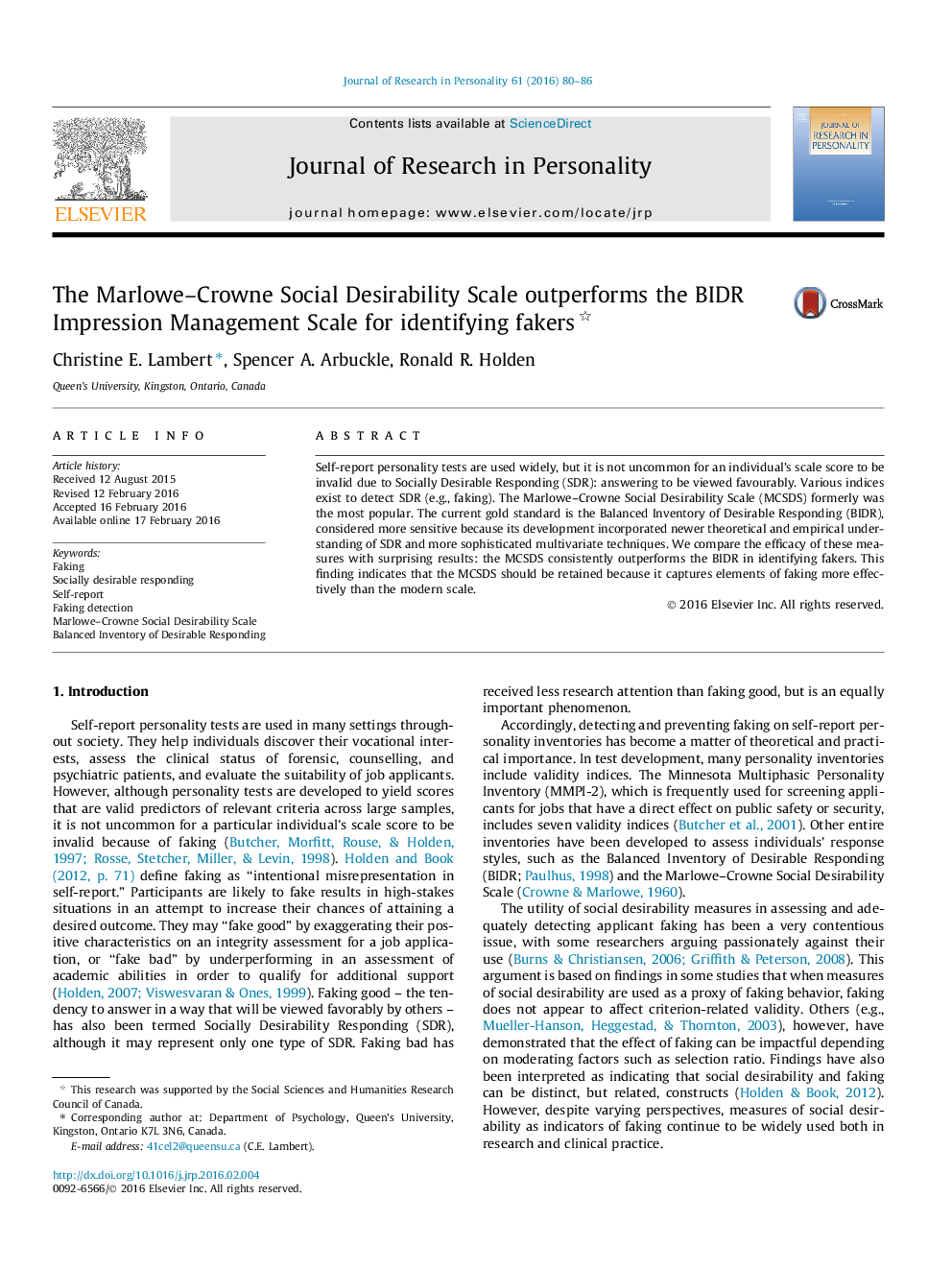| Article ID | Journal | Published Year | Pages | File Type |
|---|---|---|---|---|
| 951237 | Journal of Research in Personality | 2016 | 7 Pages |
•The MCSDS outperformed the BIDR IM scale in three experimental faking studies.•All Cohen’s d effect sizes surpassed the 0.80 guideline for a large effect.•Optimal cut scores were over 21 for the MCSDS and over 10 for the IM scale.•Dismissal of the MCSDS as the industry gold standard is premature.
Self-report personality tests are used widely, but it is not uncommon for an individual’s scale score to be invalid due to Socially Desirable Responding (SDR): answering to be viewed favourably. Various indices exist to detect SDR (e.g., faking). The Marlowe–Crowne Social Desirability Scale (MCSDS) formerly was the most popular. The current gold standard is the Balanced Inventory of Desirable Responding (BIDR), considered more sensitive because its development incorporated newer theoretical and empirical understanding of SDR and more sophisticated multivariate techniques. We compare the efficacy of these measures with surprising results: the MCSDS consistently outperforms the BIDR in identifying fakers. This finding indicates that the MCSDS should be retained because it captures elements of faking more effectively than the modern scale.
